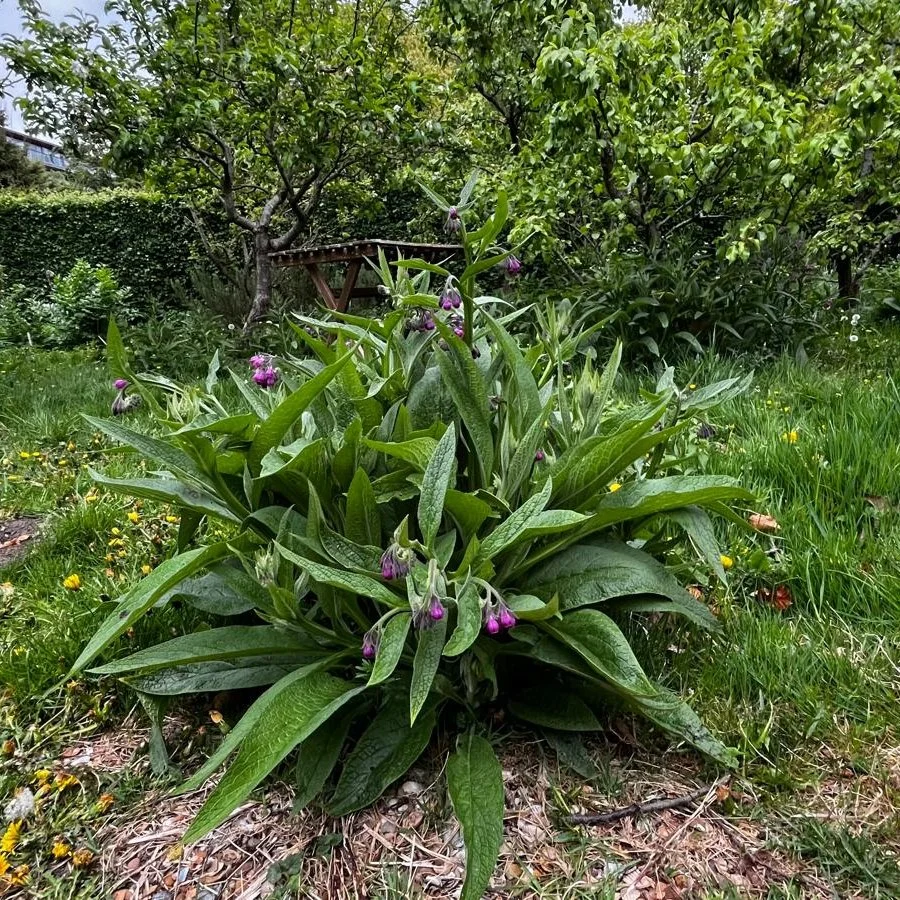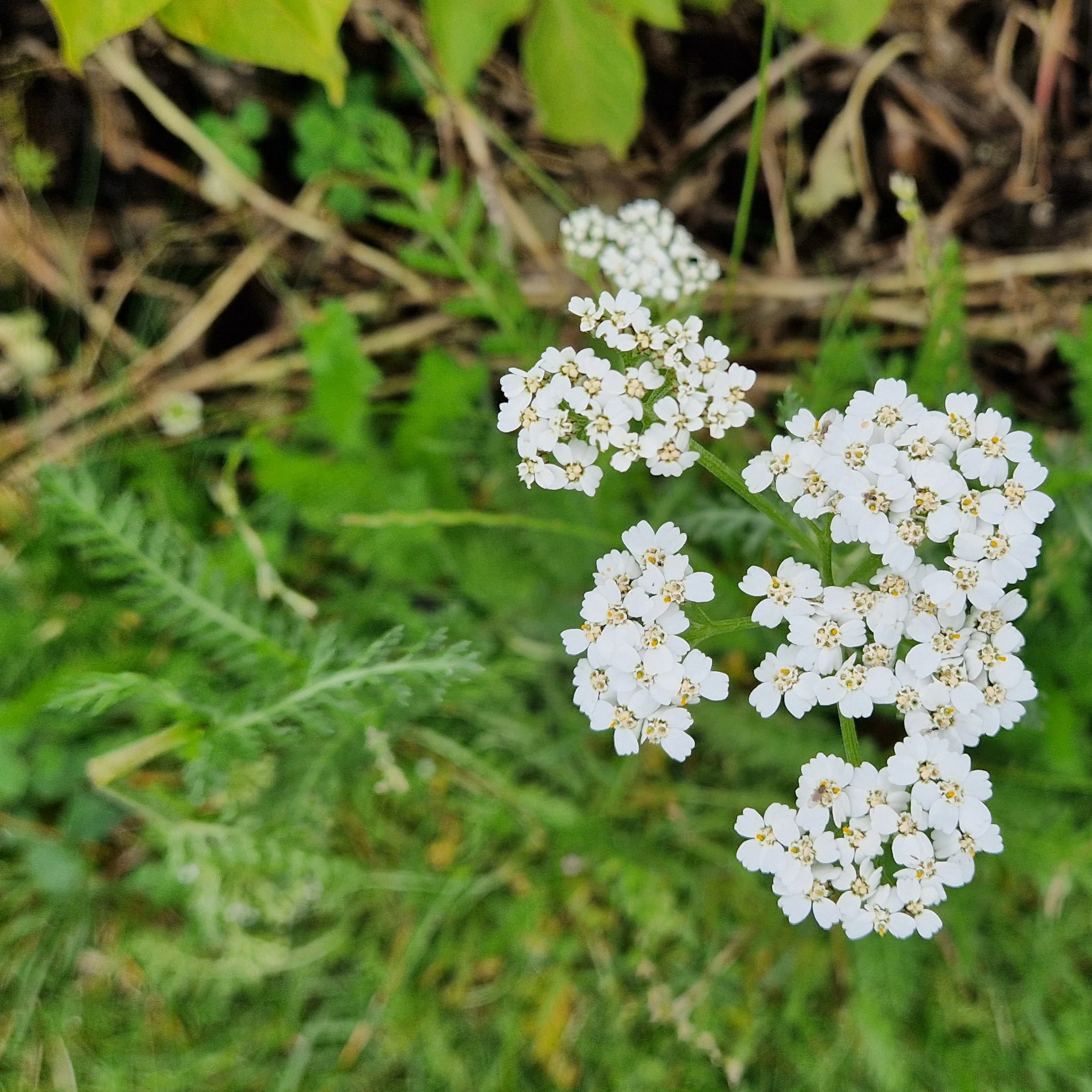Cityplot recipes -5
A Witchy Brew or Two
Two seasonal, beginner friendly recipes for medicinal Wonder Salve and Herbal Hair Tonic
pexels-nora-brody
I have a great love for the Elder (Sambucus) and here in Amsterdam they’ve started to bloom. Commonly associated with magic and uniting the polarities of light and dark (because of their white flowers and near-black berries), the Elder always makes me think of witches and how much we need their wisdom to help us harness the abundance that’s hidden in plain sight. Lucky me, I happen to be surrounded by modern witches who brew, macerate and gift a whole medicine cabinet full of nourishing goodies from the garden and beyond. Today, I will share two of these recipes, as this wisdom is intended to spread and is best enjoyed in company!
European elder Sambucus nigra
The first recipe comes from a wonderful witch who has been spreading her seeds all through Amsterdam for many years - Lynn Shore. This recipe is beloved by Cityplotters far and wide, and will definitely be one I’m trying this year! It’s a Wonder Salve: an all-purpose salve to be used freely for sprains, strains, aches and skin irritations, made from a mix of spring and early-summer leaves and flowers that can be combined to your preference. Next, I’ll share a hair tonic that’s also spreading through Cityplot circles, initiated by our local herb lover Eva Thomassen. This tonic is used as a daily spray that promotes growth, luster and strength, and in Ann’s words, has the Stadsboerderij Osdorp team “walking around with luscious locks”! I’ve started to use this one recently, and while I can’t attest to the long-term effects yet, it makes me feel pretty darn good!
For the first-time witches amongst us (of who I am one!), I’ve added more details about the two main steps of salve making after the recipes, as this wasn’t totally clear to me when I first started making themsalves. That section overviews oil macerates, the difference between a cold and warm oil infusion, and how to get from an oil to a salve. That being said, both these recipes are beginner friendly and packed with seasonal goodness, so I encourage anyone reading to give it a go - enjoy!
Bumble bees love comfrey too
Wonder Salve
All-purpose medicinal salve for external use on skin irritation, aches, sprains, strains and bruises.
Ingredients:
Any combination of the ingredients below will work for a therapeutic, all-purpose salve! Work with what you can source easily, and the properties you need most. Harvest flowers and leaves that look healthy and attract you, let your intuition guide you! You can mix flowers and leaves, or make a “Green Wonder Salve” with leaves alone.
Herbs
Calendula - whole flowers
Chamomile - whole flowers
Malva - whole flowers
Lavender - whole flowers
Comfrey - nice green leaves
Dock - nice green leaves
Yarrow - nice green leaves
Elder - nice green leaves
Plantain or ribwort - nice green leaves
Ground Ivy - nice green leaves
Carrier
Organic Olive Oil
Beeswax
Coconut Oil or Shea Butter (optional vegan substitutes for beeswax)
Tools:
Saucepan or glass bowl & bigger pan for ‘au bain marie’
Glass or stainless steel measuring jug
Wooden chopstick to stir
Stainless steel sieve and muslin square fabric
Some spoons (cooled) to test (see below)
Silicone spatula
Kitchen thermometer (optional)
Containers: reuse glass pots- washed in dishwasher/65 degrees Celsius , or buy new ones
Labels
Method:
Step 1: Oil Infusion
Cold: Cover the dried herbs with olive oil in a clean jar and leave it on a sunny windowsill for at least two to three weeks. Then sieve and keep in a dark jar pot a cool place.
Warm: Add your ingredients (dry or fresh) to olive oil, over low heat from a stove top, tea light burner or fondue pot for two hours. Strain out ingredients, keep in a dark jar in a cool place.
Step 2: Oil to Salve
Pour your herb-infused oil through sieve with muslin cloth into saucepan/glass bowl. Place this ‘au bain marie’ in a bigger pan on low heat.
Add coconut oil (vegan version) or grated beeswax, stir gently.
When beeswax starts to melt turn the heat off and keep stirring gently until all beeswax is melted. (65 degrees Celsius melting point).
Test consistency by dipping cold spoon into warm oil, let it cool and check on back of hand. For a harder set, add more beeswax, for softer add some oil.
Here you can add some essential oil drops, I would add max 1 drop per 30 ml container.
Fill containers and let stand to cool. Dark glass containers are best.
Label with date and ingredients. Your salve will keep for 12 months (when stored in cool dark place).
Images from top: beeswax with ribwort leaves, ground ivy, drying calendula flowers, plantain, nettles, chamomile, rosemary, comfrey, lavender, yarrow, dock leaves, malva
Rosemary & Nettle Hair Tonic
Simple herbal hair tonic for luscious locks!
Ingredients:
Water
Rosemary (fresh or dry) - strengthens hair and scalp health, promotes hair growth
Nettles (fresh or dry) - supports blood flow to scalp
Apple cider vinegar (optional)
Tools:
Saucepan or large bowl with lid, for soaking herbs
Sieve
Spray bottle
Method
Make a strong rosemary and nettle infusion by completely submerging the herbs in just boiled water
Let sit overnight
Strain and pour into a spray bottle
Spray daily onto dry hair
Can be used also after washing as a stay in rinse.
As the hair tonic from just the infusion doesn’t have any preservatives it only keeps for a week. We recommend keeping it in the fridge and if it does get smelly throw it out! Adding a bit of organic apple cider vinegar will increase the longevity. (about 10-15%)
There you have them! Two simple recipes to add to your home-brewed medicine and cosmetics cabinet! Many thanks to Eva, Lynn, Ann and Suzanne, who all contributed something to these recipes.
And for a few more words to explain the process of salve making, keep reading…
The calendula bush that came up in our garden plot “the kever tuin” in a community garden in Berlin.
Eva’s cold infusion of whole dried calendula flowers with olive oil
Salve making in two steps
Last year I made a very simple calendula salve from flowers that came up voluntarily in our garden plot. In this process, I learnt that salve making involves two main steps. While this may be super obvious to some, I think giving an overview of these steps makes the recipes easier to handle. The first step is making an infused oil. An infused oil is a wonderful thing in itself and can be used in many different ways - think garlic or chilli infused oil for seasoning food, or a herbal oil infusion for aromatherapy, or the medicinal oil infusions you can add to salves or balms…Once you have your infused oil, the next step is mixing it with other ingredients to create that firm, salve-like consistency. Mostly typically, this is done with beeswax or one other carrier oil. Beeswax and your carrier oil have properties of their own to add to your therapeutic salve, and it is during this step that you can mix in other ingredients of your choice, like Vitamin E or a complementary essential oil.
Oil infusions
An oil infusion is an oil that has been soaked or macerated with dried herbs, spices, leaves or flowers to gently extract their therapeutic, aromatic and flavourful properties. When made and stored well, these oils preserve the goodness of your ingredients in a highly usable form that can last for a long time. Oil infusions can be made cold or warm, and which method you choose will depend on how much time you have and the ingredients that you are using, both the type of oil and what you want to infuse it with.
A cold infusion means that you submerge your herbs, flowers or whatever else you’re working with in room temperature oil in an airtight jar and leave it to soak for 2-6 weeks in a sunny spot. It’s good to use well-dried material in cold infusions, to stop nasty bacteria from developing pathogens like botulism from the moisture of fresh herbs. When your intuition tells you the oil is full of goodness, you can sieve the herbs out and pour the oil into a dark jar that you keep in a cool-place out of direct sunlight. Cold infusions are suitable for herbs or flowers that are delicate, and works well to preserve volatile compounds which may be lost with heat (like essential oils) and is time intensive in a passive way. You can use any oil you like for a cold infusion but it makes sense to choose an oil with a long shelf life, that has a neutral smell and flavour and is of a high quality (organic, cold pressed) - you’re putting it all over (and even in!) your body after all.
A warm infusion involves heating your ingredients and oil on low heat for anywhere between 45 minutes and 12 hours. This may be better for tougher materials like bark, roots or seeds. This is a faster method that can be useful for short-term needs and when done with attention and care will not damage the potency of the therapeutic properties you are looking to harness. It’s important to use a high quality oil that’s tolerant to heat and to keep an eye on it, stirring it regularly and keeping the heat very low. In my experience, olive oil is a good choice for warm infusions. If you don’t trust your stove-top to gently heat your oil, our Sweden-based colleague Suzanne Oommen uses a tea light burner for her Wonder Salve, a great low-energy and low-heat option, or even a fondue pot she found at a second hand store and keeps around for salves and oils! Once heated and soaked, you can sieve out the herbs and pour your infused oil into a dark jar, let it cool, and keep it in a cool place out of direct sunlight.
From oil to salve
This step involves mixing your oil infusion with something to thicken and stabilize it, as well as adding any other ingredients you want to include. Beeswax is perhaps the most often used ingredient for salves and balms, but cocoa butter and shea butter are good vegan alternatives. These ingredients give the salve a firmer texture and are themselves hydrating and moisturising for skin. If your salve sets too thickly and is hard, you can add more of your oil infusion or a third ingredient, another oil. This extra oil makes your final product a little softer, adds body to your product and is an opportunity to introduce other properties. I like to add coconut, almond or jojoba oil (which smells amazing!). Once you choose your ingredients for this step, you will heat up your oil infusion ‘au bain marie’, let the oil hit 65℃, and add grated or pellets of beeswax (or vegan alternative). Stir well, till the beeswax melts completely. As the new mixture cools, add any other ingredients - vitamin E or a complementary essential oil.
Salve making is fairly simple yet so rewarding. Having a homemade salve to slather over your skin when you need it feels healing, even before the medicinal properties start to heal you! Try it out, make a mess, many different combinations and above all, enjoy crafting with nature and connecting to your inner witch!
For more herbal wisdom we reccommend you consult: Urban Herbology
Image credits: Suzanne Oommen, Kalliope Bournia, Eva Thomassen and stock photos from pexels and unsplash
Cityplot contributors:
Kalliope Bournia
“I've been learning, working and growing through Permaculture and Somatic practices for most of my adult life and hope to continue doing so for the rest of it!”
Eva Thomassen, Kids Team co-founder & GDGD teacher
Ann Doherty, City coordinator and GDGD teacher and former Pluk! CSA farmer
Suzanne Oommen
Gardener, teacher and Cityplot Sweden coordinator





















